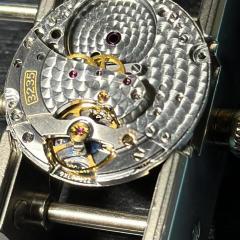-
Similar Content
-
Recently Browsing
- No registered users viewing this page.
-
Topics
-
Posts
-
Hi,what is the model number for that case? Is possible I have one for service with me,if so then I can measure for you the factory size of the bezel
-
By RichardHarris123 · Posted
My hair went in my early twenties, shaved it off and never looked back. -
It can be a good idea to replace the gasket as well, especially if has any kind of damage. If it's a very tight fit between the gasket and the crystal, a thin layer of silicon grease on the gasket can help a lot. Keep us updated!
-
Double checked, definitely a fake bezel. It has a thin plastic gasket that creates the seal for the crystal. I went ahead and gave the case a good cleaning, and light polish. Now Im just hoping I can install the new crystal with out screwing up! I will likely be putting it in tomorrow night.
-
Try the gel we used during covid. Works really great for removing gasket-turned-to-tar residue.
-










Recommended Posts